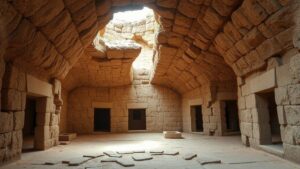Exploring the volcanic plateaus of Ethiopia for pre-Christian settlements.
Exploring the Volcanic Plateaus of Ethiopia for Pre-Christian Settlements
The volcanic plateaus of Ethiopia hold significant historical value, especially in the context of pre-Christian settlements. These highlands, characterized by their rugged terrain and unique geological formations, have been home to various ancient civilizations, fostering a rich tapestry of culture and history. This article aims to explore these fascinating regions, focusing on their geographical features, historical significance, and the archaeological findings that illuminate the life of pre-Christian societies in Ethiopia.
The Geography of Ethiopian Volcanic Plateaus
Ethiopia is often referred to as the Roof of Africa, due to its extensive highlands, which rise to more than 4,600 meters above sea level. most prominent volcanic plateaus include:
- The Ethiopian Highlands: This region covers about 1,200 kilometers and is primarily created by volcanic activity. It features a multitude of mountains and flat-topped plateaus.
- Mount Ras Dashen: The highest point in Ethiopia, standing at 4,550 meters, it exemplifies the volcanic nature of the region.
- The Bale Mountains: Known for their diverse ecosystems, these mountains were also formed by volcanic activities.
These plateaus are not only picturesque; they also host rich soil, making them ideal for agriculture, thereby supporting settlements for millennia.
Historic Significance of Pre-Christian Settlements
Before the arrival of Christianity in the fourth century CE, various cultures thrived in these volcanic landscapes. The most notable among them were the Kingdom of Aksum and the various indigenous tribes that inhabited smaller regions. Kingdom of Aksum, in particular, played a pivotal role in trade and cultural exchange in the region.
Historically, the Aksumite Empire, which existed from approximately the first century CE to the seventh century, was one of the great civilizations of the ancient world, renowned for its monumental obelisks, advanced architecture, and impressive trade networks that linked Africa with the Mediterranean and the Arabian Peninsula.
Archaeological Findings
Numerous archaeological explorations have shed light on the lifestyles of the pre-Christian inhabitants of Ethiopia. Sites such as Axum and Lalibela have provided invaluable insights into the activity that took place in these volcanic regions.
- Axum: Excavations in Axum have revealed ancient inscriptions, structures, and artifacts that indicate a sophisticated urban center, complete with advanced agrarian practices and trade.
- Lalibela: Known for its rock-hewn churches, Lalibela also serves as evidence of high craftsmanship and architectural genius, showcasing the religious traditions of the time.
- Sites like Melka Kunture and obelisks of Aksum: These sites have yielded tools and artifacts that highlight the technological advancements of the pre-Christian era.
These discoveries confirm that the volcanic plateaus supported not just survival, but a flourishing of culture, trade, and innovation.
Social and Cultural Life
The volcanic plateaus provided fertile ground for agriculture, which enabled settlements to develop complex social structures. Evidence suggests that the inhabitants engaged in:
- Farming: Major crops included barley, wheat, and teff, staples of the Ethiopian diet, thriving in the nutrient-rich soil.
- Trade: The Aksumites traded ivory, gold, and incense with civilizations as far away as Rome and India, capitalizing on their strategic geographical position.
- Art and Religion: Artifacts such as pottery and religious items, suggest that various tribal beliefs coexisted before the spread of Christianity.
Each of these components played a critical role in shaping the rich cultural heritage that would later integrate with Christian practices.
Conclusion and Actionable Takeaways
Exploring the volcanic plateaus of Ethiopia provides not just an insight into a significant period of human history, but also highlights a landscape that has shaped the cultural and societal structures of its inhabitants. evidence from archaeological findings demonstrates the advanced nature of pre-Christian settlements and the vibrant civilizations that existed long before the arrival of Christianity.
For those interested in deepening their understanding of Ethiopias rich past, visiting sites like Aksum and Lalibela is highly recommended. Engaging with local historians and participating in guided tours can provide a more comprehensive view of the layers of history embedded in these volcanic landscapes.
To wrap up, the volcanic plateaus of Ethiopia are not merely geographical features; they are the remnants of a dynamic history that deserve exploration and appreciation.



